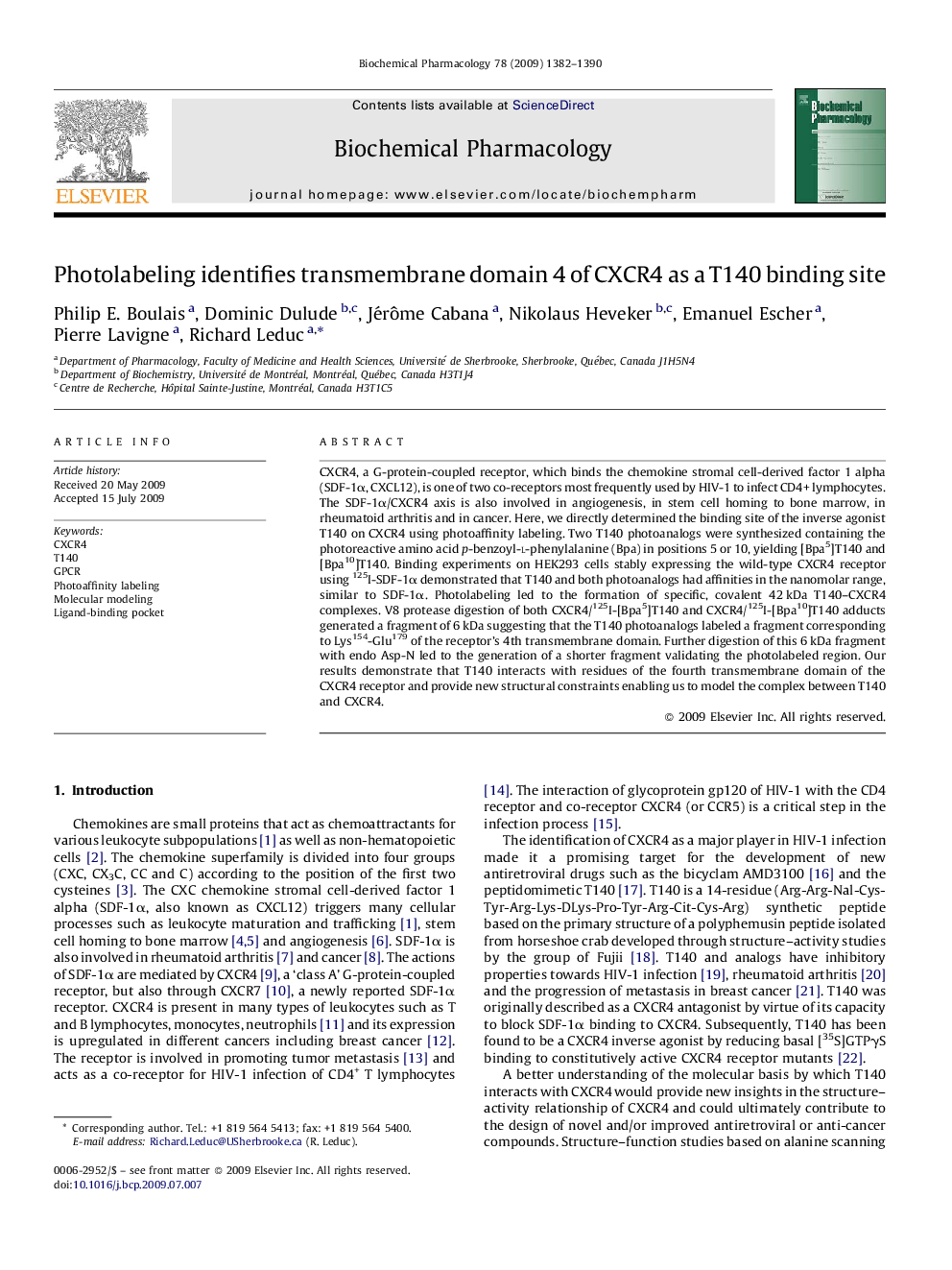| Article ID | Journal | Published Year | Pages | File Type |
|---|---|---|---|---|
| 2514576 | Biochemical Pharmacology | 2009 | 9 Pages |
CXCR4, a G-protein-coupled receptor, which binds the chemokine stromal cell-derived factor 1 alpha (SDF-1α, CXCL12), is one of two co-receptors most frequently used by HIV-1 to infect CD4+ lymphocytes. The SDF-1α/CXCR4 axis is also involved in angiogenesis, in stem cell homing to bone marrow, in rheumatoid arthritis and in cancer. Here, we directly determined the binding site of the inverse agonist T140 on CXCR4 using photoaffinity labeling. Two T140 photoanalogs were synthesized containing the photoreactive amino acid p-benzoyl-l-phenylalanine (Bpa) in positions 5 or 10, yielding [Bpa5]T140 and [Bpa10]T140. Binding experiments on HEK293 cells stably expressing the wild-type CXCR4 receptor using 125I-SDF-1α demonstrated that T140 and both photoanalogs had affinities in the nanomolar range, similar to SDF-1α. Photolabeling led to the formation of specific, covalent 42 kDa T140–CXCR4 complexes. V8 protease digestion of both CXCR4/125I-[Bpa5]T140 and CXCR4/125I-[Bpa10]T140 adducts generated a fragment of 6 kDa suggesting that the T140 photoanalogs labeled a fragment corresponding to Lys154-Glu179 of the receptor's 4th transmembrane domain. Further digestion of this 6 kDa fragment with endo Asp-N led to the generation of a shorter fragment validating the photolabeled region. Our results demonstrate that T140 interacts with residues of the fourth transmembrane domain of the CXCR4 receptor and provide new structural constraints enabling us to model the complex between T140 and CXCR4.
Graphical abstractFigure optionsDownload full-size imageDownload as PowerPoint slide
